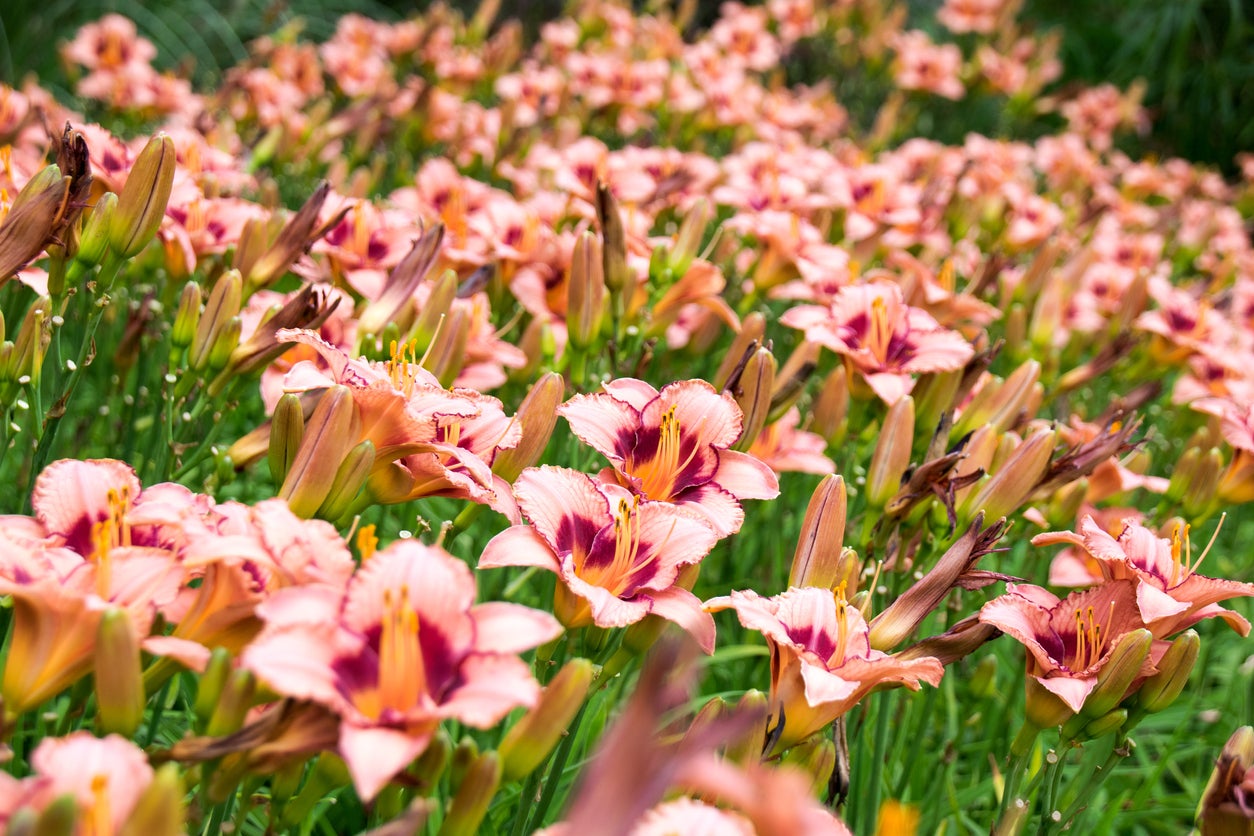Daylily Division Guide: Learn How And When To Divide Daylilies


Daylilies are pretty perennials with striking blooms, each of which only lasts for one day. They don’t require much care once established, but dividing daylilies should be done every few years to keep them healthy and blooming. Learn when and how to do this chore right for the best results.
When to Divide Daylilies
Daylily division should be tackled every three to five years for optimum health. If you never divide them, the plants will not grow as vigorously, and you will see fewer and smaller flowers each year. Newer varieties of daylily grow more slowly. You can wait longer between divisions for these.
The times of year to do the dividing are early spring and late summer to fall. If you do the division toward the end of the growing season, you can wait until the temperatures cool, but don’t wait too long. You want the new plants to have time to establish before winter.
How to Divide Daylilies
Separating daylily plants requires digging up the entire root system. Once you have the clump free, brush or rinse the dirt from the roots so you can see them. Physically separate the roots, being sure to leave three fans of leaves per clump and a decent set of roots.
You may need to use a sharp pair of shears or a garden knife to separate the roots. This is also a good time to check for any rotten, small, or damaged roots. They can be cut out and discarded.
Once you have the clumps separated, cut the leaves down to about 6 or 8 inches (15-20 cm.) in height. Get your daylily divisions back in the ground as soon as possible to minimize stress to the plants.
When replanting the clumps of daylily, be sure that the junction between the root and shoot, known as the crown, is about an inch (2.5 cm.) under the ground. The new location for divisions should have at soil that drains well. You can add a little compost to the soil, but daylilies will generally tolerate basic garden soil. Water the new transplants right away.
Sign up for the Gardening Know How newsletter today and receive a free copy of our e-book "How to Grow Delicious Tomatoes".
Don’t be surprised if your plants fail to bloom next year. This is typical and they’ll be back to normal in a year or two.

Mary Ellen Ellis has been gardening for over 20 years. With degrees in Chemistry and Biology, Mary Ellen's specialties are flowers, native plants, and herbs.